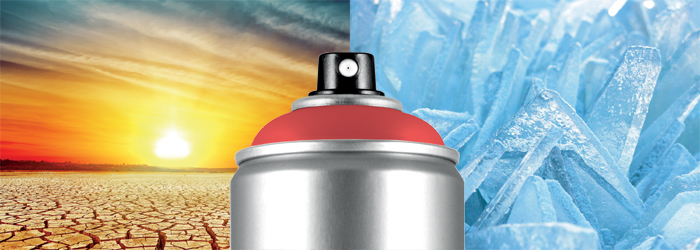Temperature is important

Painting with an aerosol can lead to wonderful results. On the other hand, it can be so frustrating that you never want to hold a spray can in your hands again. Why is that? The answers are not always straightforward, because they contain an ‘it depends’. For example, on the temperature: of the spray can, the environment and the object to be painted.
How a spray can works
In order to understand why temperature plays such an important role in spraying with a spray can, you need to understand how they work. Above all, there needs to be the correct mixture of the active substance and liquid propellant. In this mixture, part of the propellant is distributed in the active substance and the other part is gaseous, situated above the mixture of active agent and propellant, upon which it exerts pressure. When the spray head is pressed, the gas forces the mixture up through the tube and valve and into the open, forming an aerosol. The active substance is distributed in a fine, uniform fashion, meaning that even coverage is possible.
Spray can temperature
Our knowledge of kinetic energy tells us that heat increases the movement of particles. Interacting forces decline, improving the distribution and mixing of the components. A spray can that is too cold can result in rough atomisation, resulting in ‘spitting’ actions. The surface covering will be irregular (orange peel effect) and drips and runs are possible. The ideal spray can temperature for ensuring that the propellant/active agent mixture is at its best for spraying is between around 20 and 25°C. And what’s more, when spraying, the ropellant causes vaporisation chill, cooling both the can and the object. Therefore, it’s important to adhere to the drying times given for each coating and to shake the can regularly.
Ambient temperature and object temperature
However, the temperature of the spray can alone cannot guarantee optimum results. The ideal ambient temperature and object temperature are likewise between 20 and 25°C. For smaller objects, you can carefully use a hot air blower to help the process along. But for larger objects, if heatable premises, garages or workshops aren’t available, it is better to simply wait for the next warm day instead. In this context, humidity is another factor for successful painting.











